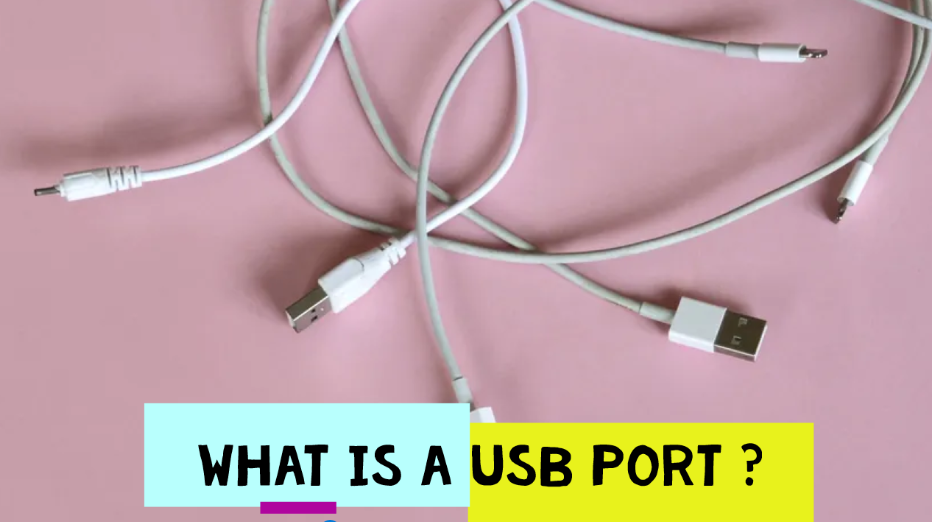USB Port stands for Universal Serial Bus, an industry standard for short-distance digital data communication. These allow USB devices to be connected to each other and transfer digital data over a USB cable.
USB-A, USB-B, and USB-C – USB port types
- USB-A (Type A): Rectangular USB Type-A connectors approximately 1.4 cm (9/16 in) in length and 0.65 cm (1/4 in) in height are common use for wired mice and keyboards. USB sticks also usually have USB-A connectors.
- USB-B (Type B): Less common than Type A, USB B devices are roughly square in shape and commonly found on routers, computers, printers, and game consoles.
- Micro USB: So-called Micro USB versions of both USB-A and USB-B also exist – smaller versions than their native counterparts popular on mobile devices. Now obsolete “mini USB” versions can also be found on many older devices.
- USB C Port: With dimensions of 0.84 cm by 0.26 cm, this new standard design to replace both A and B with smaller ports to better support the thinner form factors of mobile devices.
Where are USB ports found?
Desktop computer – A desktop computer typically has two to four ports in the front and two to eight ports on the back.
Laptop computer – A laptop computer has one to four ports on the left, right, or both sides of the laptop.
Tablet computers – The USB connection on the tablet is located in the charging port and is usually Micro-USB and sometimes USB-C. Some tablets have additional USB ports.
Smartphone – The USB port on a smartphone using as either USB-C or Micro-USB for both charging and data transfer.
How to use a USB port?
- Connect the two devices directly to a USB cable by plugging each end into a USB port.
- The cable can be plugged into a USB port even when the device is turned on or off.
- Connect multiple USB devices to each other using a single USB hub.
- A USB hub plugs into a USB port and has additional ports for other devices to connect to later.
- If you are using a USB hub, plug a separate cable into each device and connect them to the hub separately.
Note: Unplugging the USB cable from the device may damage the files in use on the device or computer. For this reason, it is always a good practice to safely eject your USB device before physically unplugging it.
USB Device Name –
Many different USB devices connect to your computer. The list below contains some of the most common.
- Digital Camera
- External drive
- Gamepad
- Headset
- iPod or other MP3 players
- Keyboard
- Keypad
- Microphone
- Mouse
- Printer
- Joystick
- Jump drive aka thumb drive
- Scanner
- Smartphone
- Speakers
- Tablet
- Webcams
